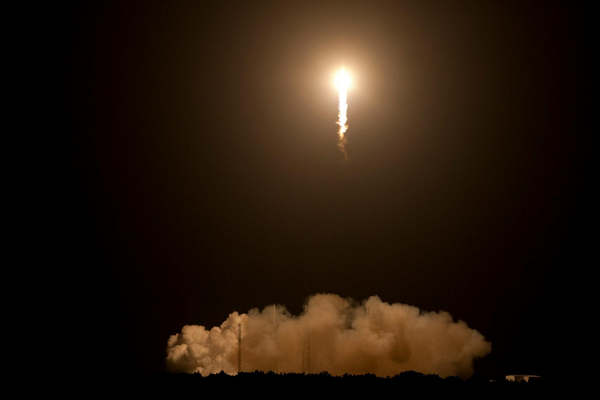
The massacre of more than 1,200 Israeli citizens – the vast majority of them civilians – has focused global attention on the question of what Hamas is and what it represents.
An acronym for the Islamic Resistance Movement, Hamas was founded as an offshoot of the Muslim Brotherhood in 1987 on three pillars: religion, charity and the fight against Israel – although arguably its earliest enemy was Fatah, Yasser Arafat’s rival Palestinian faction.
Under one of its key founders, the group’s spiritual leader, Sheikh Ahmed Yassin, it held an uncompromising view.
As the movement’s founding charter made clear, Hamas was dedicated from the start to extinguishing the existence of the state of Israel. It saw armed violence as part of that struggle, modelling its early armed wing on the fedayeen, Palestinian armed groups that emerged in the 1950s after the establishment of the state of Israel.
That armed wing would come to be known as the Izz ad-Din al Qassam brigades [al-Qassam brigades] who from their very beginning embraced the use of terror tactics against Israel, carrying out their first suicide bombing in 1993 in conjunction with Islamic Jihad.
But the movement attracts substantial popular support, and also incorporates teachers, surgeons, urban planners and police in its civil administration of Gaza.
The reality is Hamas is many things. While it runs Gaza’s health service, it is also a sinister organisation committed to the mass murder of Israelis. It administers the education service while its police have broken the bones of children caught wearing scarfs signalling family affiliation with the rival Fatah movement.
It runs the courts while, during the 2014 Gaza war, its forces abducted, tortured and murdered Palestinians accused of “collaborating” with Israel and others. It is unavoidably part of the fabric of the life in Gaza.
The armed wing
For most people Hamas is represented by its armed wing, responsible for the brutal massacre at the weekend.
After the 1993 Oslo peace accords, Hamas (along with Palestinian Islamic Jihad) deployed suicide bombings as its initial weapon of choice against the peace deal, a tactic that would be seen regularly during the second intifada.
Meanwhile, the Qassam brigades grew stronger, particularly in Gaza – becoming the substantial, well-armed and well-trained paramilitary force of today.
While Hamas’s first militants operated in a cell structure, they became more organised in Gaza around 20 years ago, when Hamas first fought a series of chaotic battles with the Israel Defence Forces that saw it take heavy losses, prior to the evacuation of the Israeli settlements in Gaza in 2005.
While the exact numbers are unclear and disputed, the Qassam brigades are today believed to count on several tens of thousands under arms including small boat forces, combat divers, a new paraglider force and drone operators.
Hamas in power in Gaza
The turning point for Hamas came in 2007. After a period of deadly anarchy in Gaza, after the 2006 Palestinian elections in which Hamas-backed candidates won the largest share of the vote, it seized power in the coastal enclave by force.
In power, Hamas, which had built its appeal on lacking the corruption of its rival Fatah, proved to be brutal and often greedy. Senior figures were implicated in damaging pyramid schemes linked to the once-flourishing smuggling tunnels to Egypt.
Big villas appeared in its southern strongholds. Analysts would speak of a “black budget” which funnelled money to the military wing and powerful individuals.
The messaging from senior figures in the political bureau in this period was contradictory. As Yassin and his fellow founder Abdel Aziz al-Rantissi had done before their assassinations by Israel in 2004, Hamas leaders would suggest the possibility of a long cessation of hostilities with Israel – known as a hudna.
That would suggest they could be pragmatic. Whether it was real – a function of their brief experiment in democratic participation – the mask could also slip. The threat of violence against Israel, and Jews more widely, was never far from the surface.
What would forge Hamas into its current shape was the blockade imposed by Israel in 2007 and the subsequent Gaza wars that would repeat themselves in a vicious cycle.
Largely shut off from the world, the Qassam brigades – which gained experience and adapted new technology and tactics learned from fighting with Israel – grew both in size and importance.
Violence became self-fulfilling. War with Israel legitimised Hamas’s role in Palestinian society and the wider Middle East.
After the 2008 Gaza conflict, support for Hamas rose sharply among the wider Palestinian society in comparison with non-conflict periods – not least in Gaza, where the shortcomings of its rule are more exposed.
Hamas has at times shown itself susceptible to outside pressure: as recently as 2017, the group updated its founding charter to finesse its traditional calls for the destruction of Israel – reportedly under pressure from Egypt, the traditional interlocutor between Hamas and Israel in times of war.
This year a Hamas delegation visited Moscow and Saudi Arabia (for the first time in seven years) as it sought a wider international hearing.
Hamas has never balked at using terrorism – indeed it has celebrated it again and again – but last weekend’s murderous rampage denotes something else.
In a hardline organisation, the most hardline of the hardliners appear to be in the driving seat, representing the growing influence in recent years of the military wing’s shadowy head Mohammed Deif – Israel’s number one target – and the apparent decision by the current head of Hamas in Gaza, Yahya Sinwar, to align himself with a policy of all-out war after being the driving force behind Hamas’s effort to improve its external relations.
Peter Beaumont was the Guardian’s Jerusalem correspondent between 2014 and 2018. Over a period of two decades, he has interviewed a number of senior Hamas leaders, including founders Sheikh Ahmed Yassin and Abdel Aziz Rantissi.







